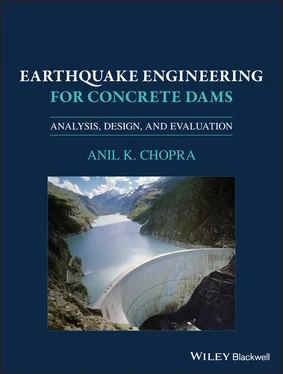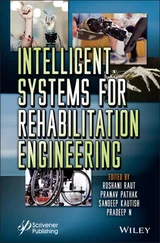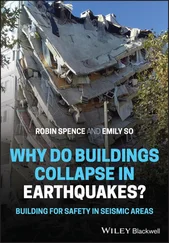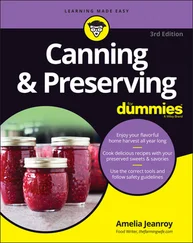Cover Design: Wiley
Cover Image: © Axpo Power AG
Copy editing and Proofreading: Clare Romeo/Line by Line Services
This book is dedicated to the memory of my mentors:
Ray W. Clough
Joseph Penzien
Nathan M. Newmark
Anestis S. Veletsos
Emilio Rosenblueth
Concerns about the seismic safety of concrete dams has been growing during the past few decades, partly because the population at risk in locations downstream of major dams continues to expand, but also because it is increasingly evident that the design concepts used at the time most existing dams were built were inadequate. During this time span the knowledge of the complex nature and intensity of ground motions has been increasing rapidly, as thousands of recordings have now been accumulated. It is now widely recognized that ground motions intense enough to cause structural damage should be anticipated at many dam sites, and it has become apparent that the seismic designs of most dams did not fully recognize the hazard.
The structural damage sustained by Koyna Dam during an earthquake in 1967 was of profound significance to the development of earthquake engineering for concrete dams. A modern dam, designed according to analysis procedures and design criteria that represented “standard” practice worldwide at the time, had been damaged by ground shaking that was intense, but by no means extreme. It was clear that the design forces had little resemblance to how the dam responded during the earthquake. The experience at Koyna Dam was a watershed event in the sense that it dispelled the myth – at that time – among many engineers that these massive dams are immune to earthquake damage, and motivated the development of dynamic analysis procedures for concrete gravity dams, eventually revolutionizing earthquake engineering for all types of concrete dams.
As a result, earthquake analysis and design of concrete dams has progressed from static force methods involving the use of seismic coefficients, to procedures that now recognize the dynamics of dam–water–foundation systems. It is the story of this progress that is presented in this book.
This book provides a comprehensive, integrated view of this progress currently scattered in hundreds of research publications. It was conceived as a reference book for graduate students, researchers, and professional engineers. It should help graduate students study the subject before embarking on their own research on earthquake engineering for concrete dams. Researchers in this field should gain new insights and improved understanding of the subject. Professional engineers should develop a better understanding of the limitations of the various methods of dynamic analysis used in practice, and become familiar with modern methods that overcome these limitations.
The book is organized into three parts: I. Gravity Dams; II. Arch Dams; and III. Design and Safety Evaluation. The objectives of Parts I and II are to (i) develop response spectrum analysis and response history analysis procedures for concrete dams; (ii) develop an understanding of the dynamics of dams, leading to identification of system parameters that influence their dynamic response; (iii) demonstrate the effects of dam–water–foundation interaction on earthquake response; and (iv) identify factors that must be included in earthquake analysis of concrete dams. In Part I, these topics are presented in the context of two‐dimensional models, which may be appropriate for gravity dams. In Part II, they are presented for three‐dimensional models, applicable to all types of dams; arch, buttress, and gravity. The objectives of Part IIIare to (i) examine critically the definitions of design earthquakes according to various regulatory bodies and professional organizations; (ii) present modern methods for selecting ground motions; and (iii) illustrate application of dynamic analysis procedures to the design of new dams and safety evaluation of existing dams.
The book provides a comprehensive view of the subject with many references to the published literature. However, Parts I and II are based primarily on the research of several doctoral students at the University of California, Berkeley, who graduated in the year noted:
Partha Chakrabarti, 1973
John F. Hall, 1980
Gregory L. Fenves, 1984
Ka‐Lun Fok, 1985
Liping Zhang, 1990
Han‐Chen Tan, 1995
Arnkjell Løkke, 2018
and on the work of visiting researcher,
Jinting Wang (2008).
This book has been influenced by my own research experience in collaboration with my doctoral students, and by my experience in consulting on many projects worldwide. Over the period 1970–1995, my research on earthquake engineering for concrete dams was supported by the National Science foundation and U.S. Army Corps of Engineers.
I remain grateful to the University of California at Berkeley for the privilege of serving on its faculty.
– Anil K. Chopra
I am grateful to several individuals who helped in preparation of this book:
Dr. Arnkjell Løkke, whose Ph.D. research is the basis for Chapter 11, prepared many of the figures in Chapters 2– 7.
Dr. N. Simon Kwong participated in the preparation of Chapter 13in several ways; he generated numerical results, developed figures, provided advice, and reviewed drafts. He also reviewed the first part of Chapter 12and developed its figures.
Professor Jinting Wang provided information on seismic design of Dagangshan Dam. Based on original reports in Chinese, he prepared the first draft of Section 14.4.
Professor Pierre Léger advised on a broad range of topics in several ways. He was generous in sharing his vast knowledge over many long conversations and in providing many publications; his command of the published literature was truly impressive. He also reviewed Chapters 11and 12.
Dr. Robin K. McGuire reviewed the first part of Chapter 12and advised on seismic risk analysis concepts and methods.
Larry K. Nuss advised on several practical aspects of design and evaluation of concrete dams, and provided publications by several government agencies.
Claire M. Johnson, a partner from beginning to end, prepared and edited the text, assembled the manuscript, and helped in too many ways to enumerate here.
Clare Romeo served as the copy editor and proofreader.
1 Introduction
1.1 EARTHQUAKE EXPERIENCE: CASES WITH STRONGEST SHAKING †
As far as can be determined, no large concrete dam with full reservoir has been subjected to extremely intense ground shaking. The closest to such an event was the experience at Koyna (gravity) Dam ( Figure 1.1.1), with the reservoir nearly full, during the 1967 earthquake (Chopra and Chakrabarti 1973). Ground accelerations recorded at the dam site during a nearby earthquake of magnitude 6.5 had a peak value of 0.38 g in the stream direction and strong shaking lasted for 4 sec. Significant horizontal cracking occurred through a number of taller non‐overflow monoliths at or near the elevation where the downstream face changes slope; however, the dam continued to retain the reservoir even though the water level was 25 m above the cracks ( Figure 1.1.2). A similar experience had occurred in 1962 at Hsinfengkiang (buttress) Dam ( Figure 1.1.3) during a magnitude 6.1 earthquake in close proximity. Although not recorded, ground motions were probably quite intense causing cracking at 16 m below the crest ( Figure 1.1.4); the dam continued to retain the reservoir though the water level was 3 m above the cracks.
A few dams have withstood very intense ground shaking with little or no damage because of their unusual design or low water level. Perhaps the strongest shaking experienced by a concrete dam to date was that at Lower Crystal Springs Dam, a 42‐m‐high curved gravity structure ( Figure 1.1.5) dam with nearly full reservoir, located within 350 m of the San Andreas fault that caused the magnitude 7.9 1906 San Francisco earthquake. Built with interlocking concrete blocks, the dam was undamaged, even though its reservoir was full. However, the earthquake resistance of this dam greatly exceeds that of typical gravity dams due to its curved plan and a cross section that was designed thicker than normal in anticipation of future heightening, which was never completed; a section view of this dam is shown in Figure 1.1.6.
Читать дальше












